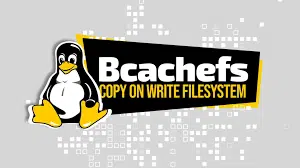- Understanding Modern Storage Trends
- NVMe: Speed and Efficiency
- Bcachefs: Future of Filesystems
- ZFS: Stability and Flexibility
- Tiered Storage: Optimizing Performance and Cost
- Convergence of Technologies
- Conclusion
Understanding Modern Storage Trends
As technology continues to evolve, so does the landscape of data storage solutions. Linux environments have seen a significant shift in how data is managed, stored, and accessed. The rise of NVMe, the emergence of Bcachefs, the reliability of ZFS, and the efficiency of tiered storage strategies are shaping the future of storage. Understanding these trends is essential for system administrators, developers, and IT professionals looking to optimize their systems.
NVMe: Speed and Efficiency
Non-Volatile Memory Express (NVMe) has revolutionized the way data is transferred between storage devices and systems. Unlike traditional interfaces, NVMe utilizes the PCIe bus, enabling faster data access and reduced latency. This means quicker boot times, faster application launches, and more responsive systems overall.
A key advantage of NVMe is its ability to handle multiple queues, significantly increasing throughput. For enterprises with intensive workloads, such as databases and virtual machines, this performance boost can lead to a noticeable difference in efficiency. With prices gradually decreasing, adopting NVMe storage is becoming more viable for various applications beyond enterprise scenarios, such as gaming and video editing.
Bcachefs: Future of Filesystems
Bcachefs is a new filesystem tailored for durability and performance, designed specifically to leverage modern storage technologies. It is built with an emphasis on advanced caching mechanisms, combining the benefits of both Bcache and traditional filesystems. Utilizing Bcachefs can result in improved data integrity and better handling of large files, making it ideal for high-performance computing environments.
One of the standout features of Bcachefs is its snapshot and replication capabilities. These allow for efficient backups and easier recovery options, crucial for businesses that prioritize data protection. As Bcachefs continues to mature, its potential to replace existing filesystems in Linux is increasingly apparent, promising a robust solution for data storage.
ZFS: Stability and Flexibility
ZFS remains a popular choice for those seeking a reliable and features-rich filesystem. Known for its data integrity verification, ZFS uses checksums to ensure that data remains uncorrupted, making it a favorite among organizations that cannot afford data loss. Its built-in RAID capabilities, particularly ZFS RAID (zpool), allow for easy management of storage pools, providing flexibility in configurations to suit different needs.
Additionally, ZFS supports advanced features like snapshots and cloning, enabling rapid backups without requiring additional storage overhead. With its ability to manage high capacities, ZFS has become increasingly vital for enterprise-level applications and cloud storage solutions, standing the test of time in an ever-evolving landscape.
Tiered Storage: Optimizing Performance and Cost
Tiered storage is an innovative approach that combines multiple storage types to optimize performance and cost-effectiveness. By employing a strategy that organizes data based on its access requirements, organizations can leverage the strengths of different storage media. For instance, frequently accessed data can reside on NVMe drives, while less critical data might be relegated to slower, traditional HDDs or even cloud storage.
Implementing tiered storage not only enhances the speed of data retrieval but also reduces costs associated with high-performance storage technologies. Furthermore, this strategy ensures that data management aligns with business priorities, allowing for a more efficient use of resources.
Convergence of Technologies
The interplay between NVMe, Bcachefs, ZFS, and tiered storage represents a broader trend in data management. Enterprises are increasingly looking for solutions that combine speed, reliability, and efficiency. By exploring and integrating these technologies, organizations can create tailored storage solutions that meet their specific needs, allowing for scalability and adaptability in an ever-changing technological landscape.
Conclusion
As we navigate through a world where data is paramount, keeping abreast of trends such as NVMe, Bcachefs, ZFS, and tiered storage is vital. Each of these technologies offers unique advantages that can significantly enhance data handling capabilities. By adopting and integrating these trends, those managing Linux environments can ensure they are prepared for current demands and future challenges in data storage and management.
